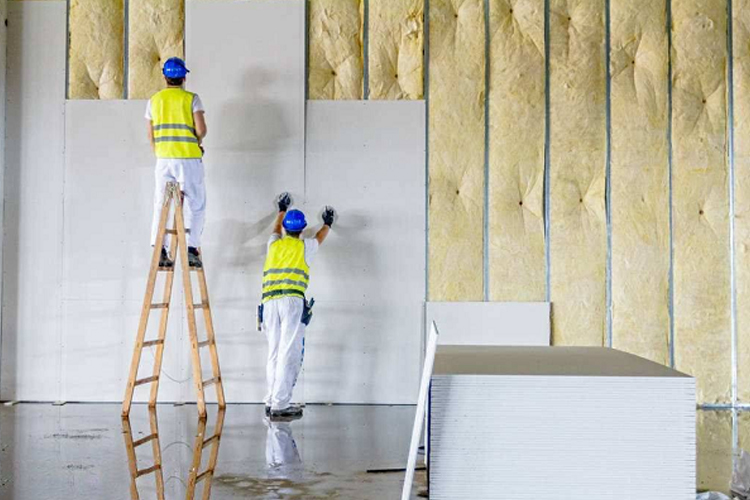

SEARCH
Rock wool and glass wool is a multi-functional material, not only can be thermal insulation, fire and flame retardant, but also can be applied in the field of acoustics, for sound absorption and sound insulation. These two materials are inorganic fiber materials, very similar. Below, Uetersen insulation material manufacturers will give you an analysis of the use of rock wool and glass wool in the sound insulation project some suggestions.
1. Isolation wall cavity
The most obvious recommendation is to isolate the wall cavities, as this is simply custom made for inorganic fibrous, fluffy materials such as rockwool or glass wool. Of course, if you want to make the sound insulation even better, you can add other materials.
As mentioned earlier, rockwool and glass wool absorb sound waves. But in order to achieve proper sound insulation, you also need to add more mass and sound insulation materials. This means that the level of sound waves entering the wall cavity is reduced in the first place, making any absorption techniques more effective.
Of course, for best results, you need to separate the walls. This is a form of mechanical isolation that completely isolates one side of the wall from the other. But this is often not practical.
Either way, filling the wall cavities with glass wool insulation would be a useful addition. From a sound insulation point of view, its lower density is more useful.

2. Heat insulation of HVAC system
Glass wool is used to insulate pipes and HVAC systems. Glass wool insulation is often sold in the form of pipe wrap, which is more flexible and therefore ideal for wrapping pipes and vents. But rockwool is much harder and therefore cannot be used for such applications.
3, floor and ceiling soundproofing
You can use glass wool to soundproof floors and ceilings, just as you would for walls. The rigid block of rockwool helps insulate the plane, but glass wool is still easier to install.
In addition, you may find that rockwool does not work as well on floors and ceilings. This is because it is more effective against airborne noise than impact noise.
The distinction between the two is important. Air noise refers to sound transmitted through the air, such as sound, television, or music. These are just vibrations in the air that are easier to absorb.
However, when an object is in direct contact with a surface, such as footsteps, impact noise is produced. They have more vibrational energy transferred directly to the surface rather than through the air. The most effective way to eliminate impact noise is to employ decoupling or mass.
Again, you can still benefit from some mineral wool insulation in the cavity for extra sound absorption. But don't rely entirely on it as a soundproofing solution.
4. Build room partitions
Rockwool is a good addition to items such as soundproofing panels or DIY room partitions. While these will never soundproof a space, they can be used to manage and channel noise pollution over large areas.
Of course, if you plan to make panels out of rockwool, be sure to cover all sides with drywall or non-porous material. Rockwool is generally safer than glass wool, but you still want to avoid any accidents.
Sum up
When it comes to the sound insulation effect of glass wool and rock wool, I think glass wool is always the better choice. It's cheaper, easier to buy, and easier to install. Although its overall sound absorption performance may be poor, it is better from a sound insulation perspective because there are fewer fibers to vibrate. In addition, its lower price more than makes up for any performance issues. The advice is to plan your project in detail and understand your needs. Only then can you make the right decision.